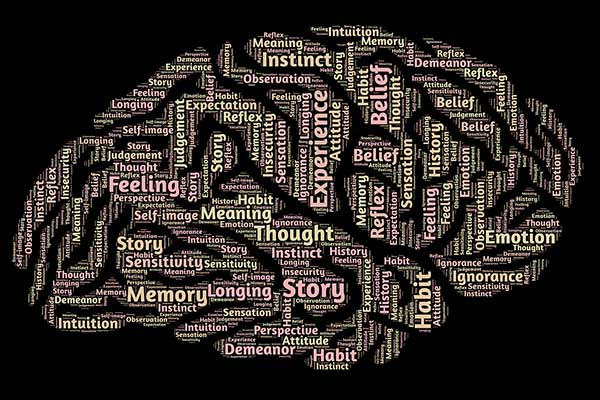
Are You Running a Smart Business?
The World Economic Forum, a global organization, dedicated to generating a bureaucrat-controlled economic future for the world’s citizens, has announced that we are on the cusp of something that it’s calling the “fourth industrial revolution.” It begs the question, what were the first, second and third? Per the government-sponsored body, the first involved the use of steam power which generated the railway network and created the Victorian factory. The second was the invention of mass production along with a new energy source, electricity, at the start of the 20th century. The third was the widespread use of information technologies, like the microprocessor, in the 1970s and 1980s.
But now, according to the World Economic Forum, we’re entering a fourth era. This one they say will be driven by artificial intelligence, big data, and analytics. We already see the very first signs of this new world: cars that drive themselves, factory production lines that react to demand in real time, businesses using big data to predict where they should invest next. It’s all rather exciting. But what does it mean to businesses today?
Image credit: Vimeo
At the moment, we see increased interest in something called “business intelligence.” It’s the idea that so many data are now being generated that companies can use them to make decisions, improve their agility and predict what might happen in the future.
Google Analytics is one of the most popular platforms out there which businesses can use to do things like assess the level of traffic going to their website and optimize conversion rates. But there’s a whole world of analytics opening, which will illuminate for businesses exactly what clients and customers want from their services.
Now that we’re on the cusp of something truly revolutionary in the world of business, companies need to start focusing once again on the future. This is how to make your business more intelligent to optimize your operations.
1. Provide Real-Time Targeted Adverts
Currently, most businesses offer blanket offers to their customers. But what they’d really like to be able to do is price their product in accordance with what their customers are willing to pay at any given moment. Finding out what they want on an individual level is difficult to do in a world where data isn’t abundant. But smart companies have realized that they can use user data, as well as a host of other data from individual customers, to predict their willingness to pay.
The cool thing about this is that it’s now possible to give customers offers and discounts in real time when they are wavering about whether to click the “order” button. It’s a lot like when people on market stalls offer discounts when they sense that they are going to lose the sale at a higher price.
Take Domino’s Pizza, for instance. It’s got it’s own business intelligence solution that it calls Splunk which it uses to determine the effectiveness of its coupons. If it senses that some of its targeted coupons aren’t working, it changes strategy and makes adjustments that are tailored to what its customers actually want.
2. Listen To Social Media Sentiment
In the past, companies used to spend thousands, if not millions, on analyzing customer sentiment. They wanted to find out how well a particular product was received or how positively customers saw a particular promotion. But without the internet, gathering these data was difficult. Now, though, businesses are able to access analytics and data from social media websites, which inform them about the sentiment towards their company or their product. Social media listening has become a key way in which businesses can now listen to their customers online, thanks to the use of business intelligence software. It’s ideal for picking up individual complaints, as well as sensing what people think of a specific product in general, as well as what they find exciting. Often the products that the company thinks are exciting aren’t what the customers are interested in.
Image credit: Pixabay
AMD, the computer hardware manufacturer, discovered this the hard way, right back at the beginning of the big data revolution. For a long time, they’d been focusing on building components designed for businesses. But this market was pretty stale, and they had lost touch with what the consumer market wanted, believing that they would just accept re-purposed business products. But when AMD considered the true consumer sentiment, they found something very different. Social media was telling them that customers wanted raw power from the components in order to run the latest games. The company has since transformed itself into a quasi-gaming brand and is now launching products aimed at the enthusiast gaming market.
3. Manage Inventory In Real-Time
One of the reasons so many companies are investing in courses like those at https://www.simplilearn.com/big-data-and-analytics/tableau-desktop-9-tutorial-and-certification-training is because they need better ways to manage all of the data flowing in and out of their companies than Excel. Take companies that have to manage their inventory, for instance. Manually calculating and predicting stock coming into the company, and going out is a challenge. Especially for ecommerce companies, knowing what is in their inventory is essential, as well as knowing when to expect spikes in demand.
Now, though, there’s software that is able to track inventory levels in real time, giving companies up to the minute data on what stock they have, and what stock they’re going to need in the near future. The cool thing about this software is that it tracks demand over time, meaning that businesses have access to historical data for predicting market trends in the future.
The ultimate aim of new, intelligent software is to minimize waste while also ensuring that businesses don’t lose out on opportunities to sell. Supermarkets, online food retailers, and anybody who sells perishable products is expected to benefit greatly from these new inventory technologies. In the future, it should be possible to generate so many data that the systems themselves will be able to do things like predict demand and automatically order products on behalf of the company.
4. Make Better Use Of Retail Space
Over the decades, retailers have spent a fortune researching the types of layouts that customers like, as well as how to manage different customers at different times of the day. But everything that they discovered was found out by trial and error. In other words, they kept trying different things until something stuck.
Image credit: Wikipedia
The problem with this process is that it is costly, and retailers necessarily had to make many mistakes along the way. Fortunately, the combination of video cameras in every store and sophisticated software is changing all this. Using video data from their CCTV cameras, stores are now able to plot heat maps of the most trodden routes in their stores, as well as get demographic information about their customers in real time. As a result, they can now place promotions in parts of the store that get the most footfall, as well as work out how to reduce bottlenecks in certain areas of the store. Demographic information will also help them target certain groups with different product lines. These data are particularly useful for national chains that may be wondering how exactly they should change their product line in various regions of the country.
5. Reduce Customer Turnover
We’ve all heard about how expensive it is to have high employee turnover. Well, it’s also very expensive to have high customer turnover. Like getting a new employee, getting a new customer costs a lot of money, so it pays if businesses can keep the clients that they have.
Currently, the majority of business collect data about their rate of customer turnover, but very few businesses know exactly what’s driving it. That’s where business intelligence comes in. With the right software, it’s now possible to gather information about what is causing customers to disengage from your product. In the process, businesses are able to save money, improve sales and get their customers talking positively about their brand.
According to GetApp, a website that reviews customer engagement software, ChurnSpotter is an app that helps businesses predict whether a particular customer will leave them or not. It’s a program that classifies customers into three groups, based on their individual level of risk. If it detects a customer might be about to leave, it prompts the business to re-engage the client and rescue the situation.
6. Match Customers To Employees
No matter how hard you try, not all of your customers and staff will get on. But now big data and business intelligence are promising to change all that. Imagine for a moment that you could match-make your customers and your sales representatives based on personality. It’s something that is already being done in the online dating world; why not do it in the business world as well?
Behavioral software like Mattersight is making that a reality. It’s an intelligent piece of kit that can be used by call centers to forward calls to agents who have the right personality match for customers. It’s hoped that this will lead to healthier and better interactions with clients.



